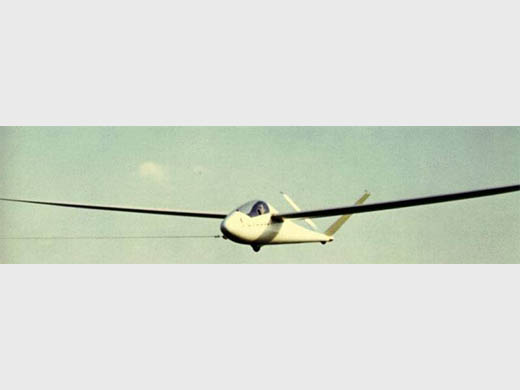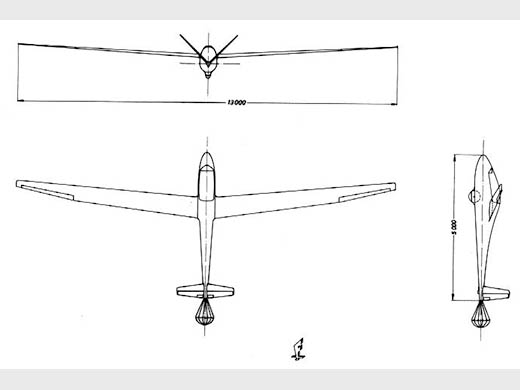
Akaflieg Stuttgart FS-23 Hidalgo
| DONNÉES GÉNÉRALES |
| Année du premier vol (ou de design, si seul projet) |
1966 |
| Pays | Allemagne |
| Designer(s) | Akaflieg Stuttgart |
| Premier constructeur | Akaflieg Stuttgart |
| Type d'appareil | Planeur |
| Fonction | Performance |
| SPÉCIFICATIONS TECHNIQUES |
| Envergure | 13 m |
| Longueur | 5 m |
| Hauteur | 0.89 m |
| Allongement | 24.1 |
| Surface alaire | 7 m2 |
| Profil aile | FX 61-184 bei 0,045 b/2 ; FX 61-168 bei 0,23 b/2 ; FX 61-147 bei 0,70 b/2 ; FX 60-126 bei 0,88 b/2 |
| Masse à vide | 102.5 kg |
| Masse maxi | 190 kg |
| Charge alaire | -- |
| Vitesse mini | -- |
| Vitesse maxi | -- |
| Finesse maxi | |
| Taux de chute mini | -- |
| Nb sièges | 1 |
| Structure | Sandwich fibre de verre/balsa (GFRP-balsa sandwitch). |
AUTRES INFORMATIONS
| Constructeur(s) |
| ||||||
| Infos techniques | Empennage en V. Parachute de queue. The outer dimensions especially the small wing span and the large aspect ratio and a sufficient load capacity resulted in xetreme requirements for materials and light construction. Thus the FS-23 had a structural weight of 102 kg, where 1.5 to 3 as much were common. | ||||||
| Histoire résumée | Premier vol le 1 février 1966 après une étude et une construction qui ont duré de 1953 à 1966. Le projet fut interrompu pendant la construction du FS-24. Ensuite le projet reprit mais sur un autre concept. Le design du FS-23 ne correspond pas aux classes existantes en compétition mais à une classe Mini-Standard de 13 m qui avait été envisagée à l'époque. In the development of the complete sailplane the material and component tests were the largest part of the work. For working with wood or metal the mechanical properties and any other interesting information could be found in books. But nothing about fiberglass reinforced plastics, balsa and birch wood inlay. Every type of fiberglass fabric, sandwich samples with different thickness of the balsa core or the covering fiberglass layers for the different part of the glider, bonded and riveted joints were tested for tensile, compressive and torsion strength, E- and G-module and the type of failure. As a result the mechanical properties could were compiled and allowed to dimension the components. Pendant les essais en vol, le FS-23 révéla de très bonnes qualités de vol : bonnes réactions aux commandes, annonce du décrochage à l'avance et arrêt de la vrille en un tiers ou un demi-tour. Sur la durée du projet, l'Hidalgo fut modifié plusieurs fois. En 1967, il fut endommagé pour la première fois à cause d'un phénomène de flutter de l'empennage. A 1500 m, l'appareil entra en piqué et le pilote fut éjecté : "It suddenly made ´Brumm´ and I was in the air." Les dégâts n'étant pas considérables, le FS-23 fut réparé avec renforcement de l'empennage et installation de masses d'équilibrage des volets de commandes. La fin de l'Hidalgo fut tragique : en juillet 1971 il eut un deuxième accident au cours duquel le pilote Heinz Jahn fut tué. | ||||||
| Liens personnalités | Pas de personnalité associée. | ||||||
| Compléments docs |
SOURCES DOCUMENTAIRES
| Liens WEB | Site : Site Akaflieg Stuttgart . Texte + 1 photo + plan 3 vues + specs. (2009-10-26 CL) |
| Livres | Pas de livre référencé. |
| Autres sources | Soaring septembre 1966 p 15. Note + photo |

Team J2mcL © 2003 -
- Pages optimisées pour Mozilla Firefox

